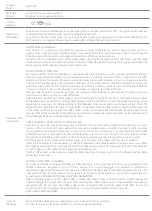
IV - 1
CHAPTER IV TROUBLESHOOTING
This section gives the service personnel some of the troubleshooting procedures to
be followed if an error or malfunction occurs with this machine. It is impossible to
anticipate all of the possible troubles which may occur in future and determine the
troubleshooting procedures, so this chapter covers some sample troubles. However,
those samples will help service personnel pinpoint and repair other defective
elements if he/she analyzes and examines them well.
4.1
Precautions
Be sure to observe the following precautions to prevent the secondary problems from
happening during troubleshooting:
(1) Get a good idea of what the trouble is. Whenever more than one trouble source is
found, plan the most reasonable repairing procedure after reviewing the
relationship between them.
(2) When supplying power to this machine having problems, make sure that its
output voltage level is 8 to 10V under no load.
(3) Before starting disassembly jobs, first remove dry cells and discharge electrolytic
capacitor C30 on the key PCB for at least 3 seconds with a resistor of 100
Ω
, 1 to
3W.
(4) To repair an error which occurred in the thermal print head and its related
sections, disconnect the head flat cable until repairs are finished.
4.2
After Repairing
After repairing the defective section, be sure to check again to see if the repaired
section works correctly. In particular, if you replace the main PCB ASSY, make a final
check given in CHAPTER III, Section 3.2.
Make a note of the troubleshooting procedure so that it will be handy should problems
occur in the future.
Summary of Contents for PT1090 - P-Touch - Labelmaker
Page 1: ...SERVICE MANUAL MODEL PT 1090 ...
Page 7: ...I 3 Figure 1 1 2 Display and Key Arrangement USA version EUROPE version ...
Page 74: ...A 1 Appendix 1 Main PCB Circuit Diagram NAME CODE MAIN PCB CIRCUIT DIAGRAM PT1090 LW4024001 ...
Page 75: ...A 2 Appendix 2 Key PCB Circuit Diagram NAME CODE KEY PCB CIRCUIT DIAGRAM PT1090 LW4025 001 ...











































